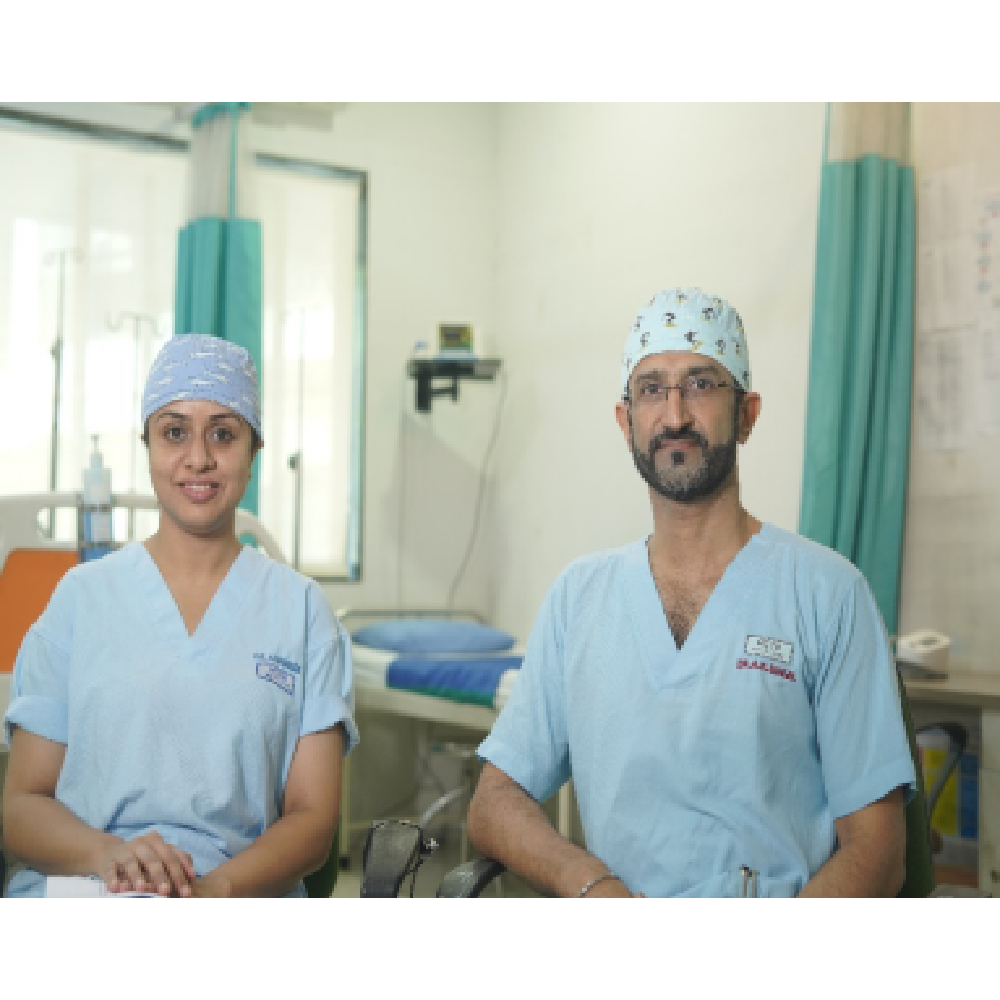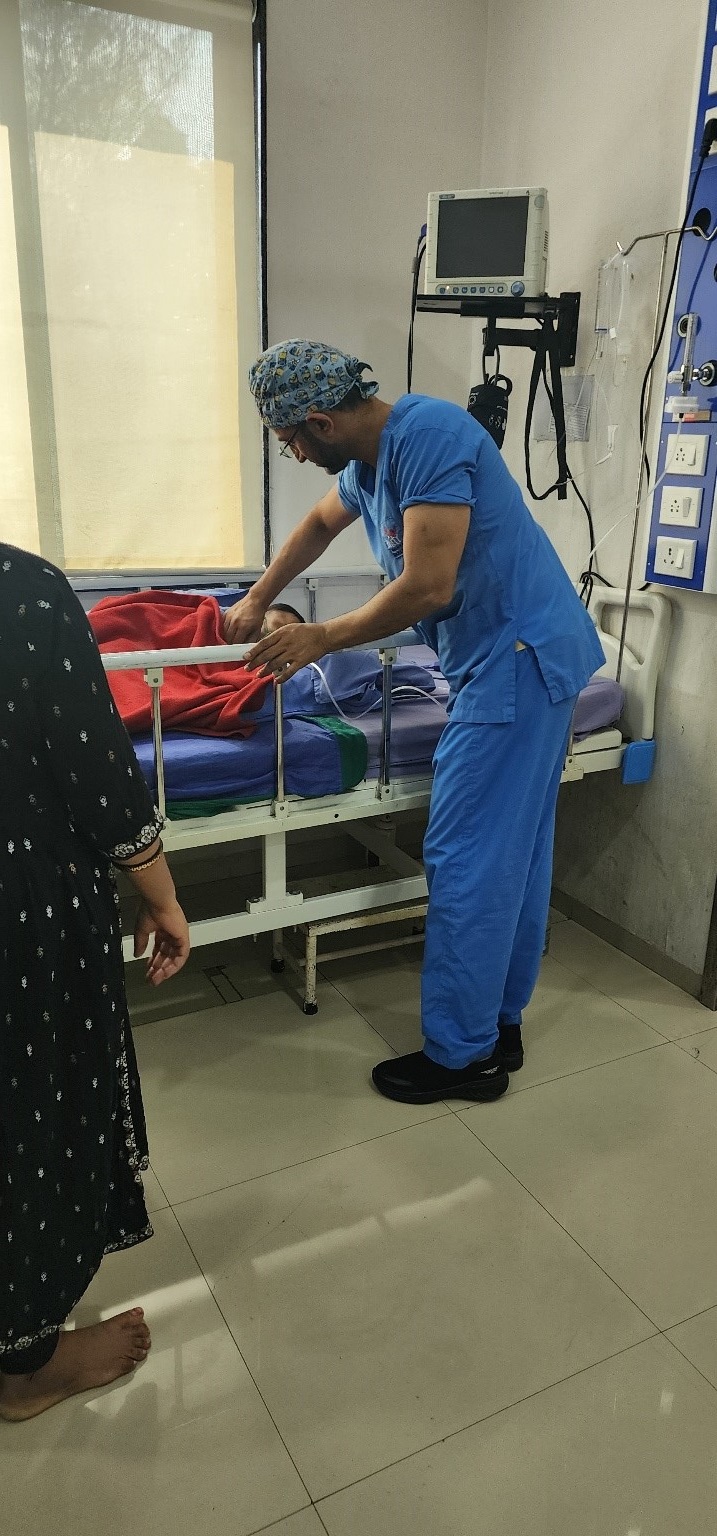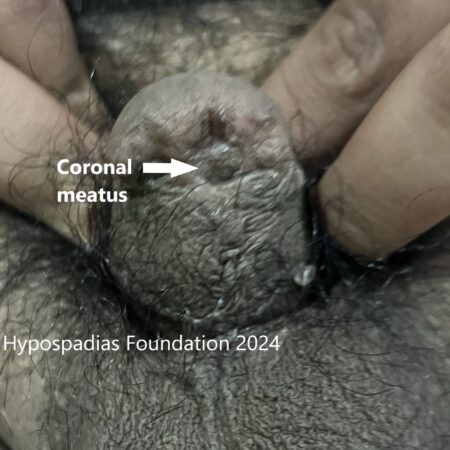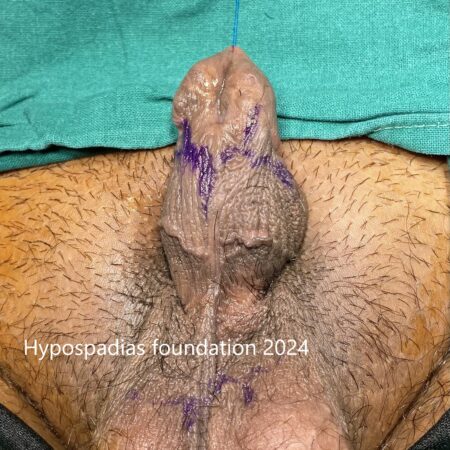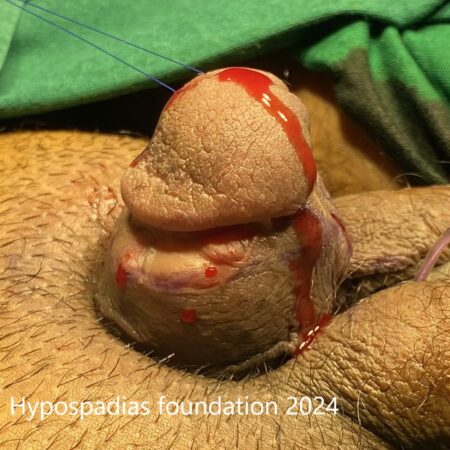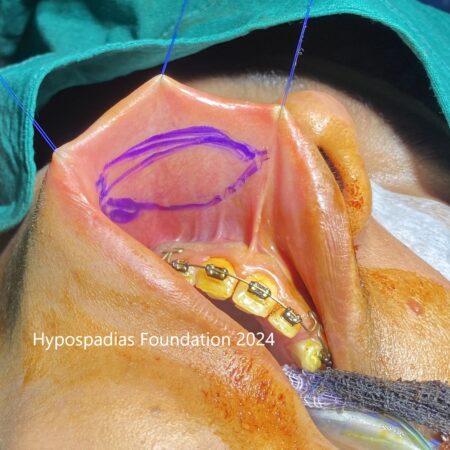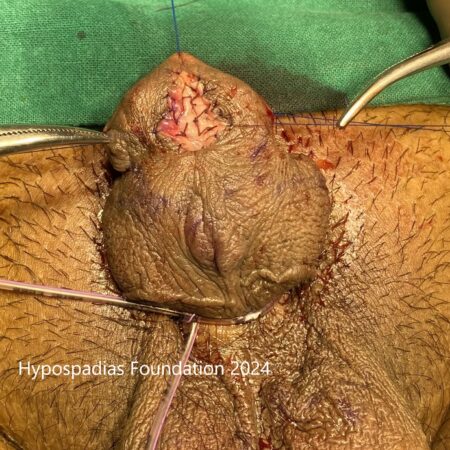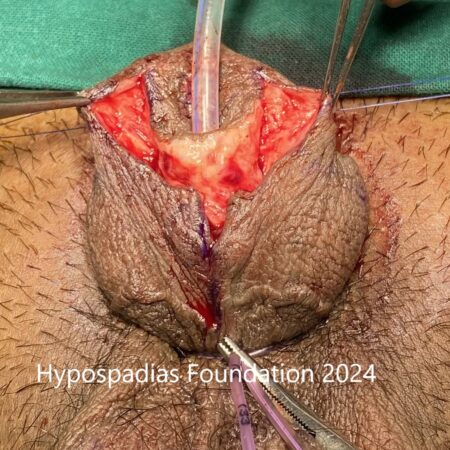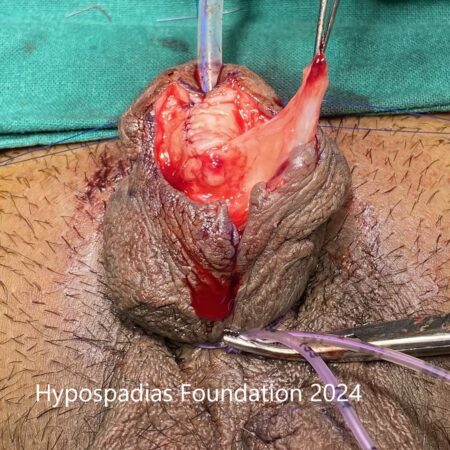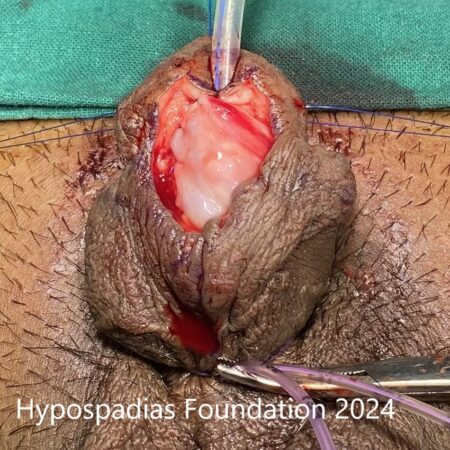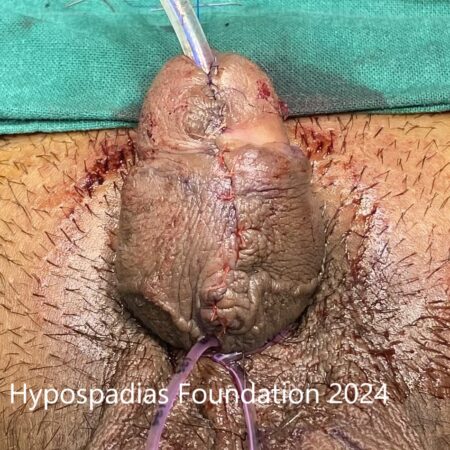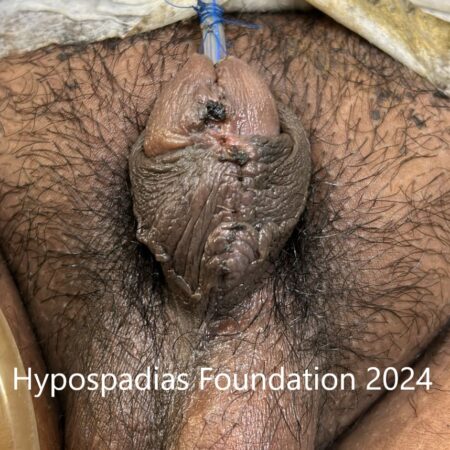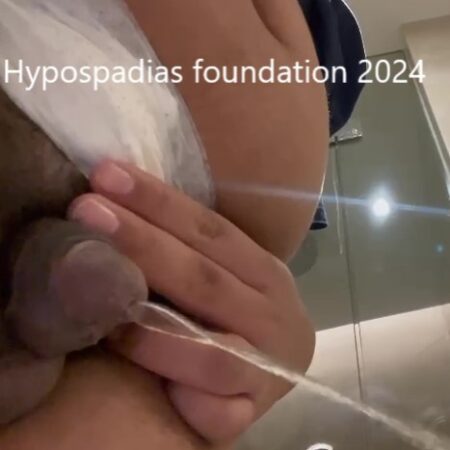One of the common questions which the parents ask in clinic when we counsel them for surgery on hypospadias is “how many days will it take for my kid to recover after hypospadias repair surgery.”
And our answer as expert Pediatric Urologist & Hypospadiologist, though very detailed, could be read two ways.
One, we are avoiding a straightforward answer and the second may be that we want to give a deeper and more enriching answer which clears all the doubts and answers the question in its whole entirety.
The recovery can be discussed along many dimensions:
The immediate and the most concerning is the Recovery from anesthesia and this usually occurs within 2-3 hours after surgery implying that the kid will be able to talk, converse and start taking liquids etc after hypospadias surgery. Usually after 4hours of surgery kids can take solid foods and normal diet. We have made sure that our operation theatre, surgical and anaesthesia protocols are child friendly to make sure that the recovery is fast, and kids go home fast. The anesthesia used is caudal plus sedation in most cases which allows for pain free recovery post hypospadias repair. We also keep a warming mat under the child during surgery to prevent low body temperature, the anesthesia team is trained in managing small babies, and all the equipment for anesthesia and surgery is baby friendly.
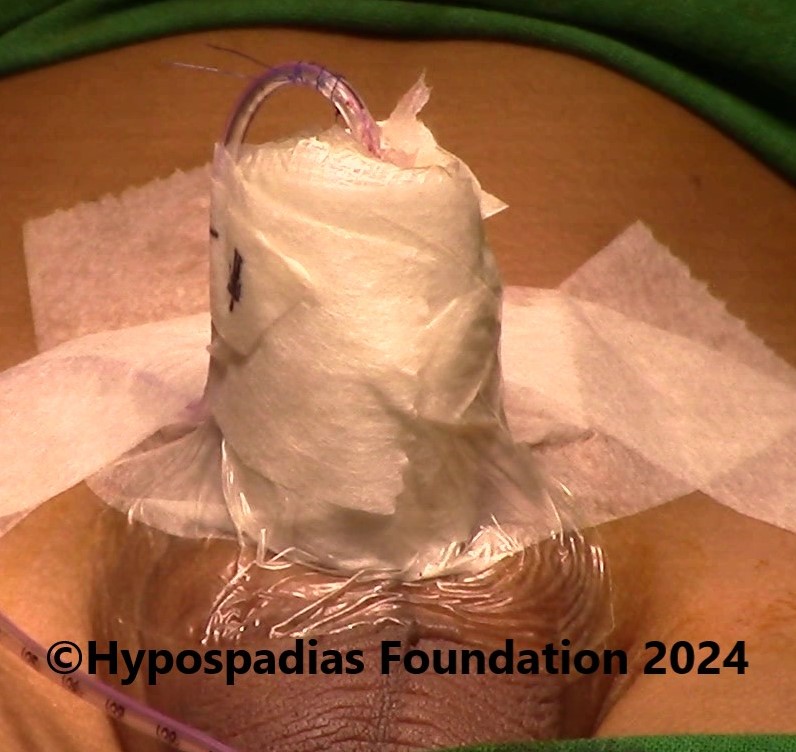
- Pic 1: Dressing immediately after surgery.Recovery to playing and walking usually happens by evening of hypospadias surgery and often we find kids fully comfortable and running around on the same day by evening or by the morning of day after surgery. That’s also the reason why we moved from bulky dressings and bags- avoiding these and using a double diaper method of managing kids after surgery allows them full freedom of movement. It is during this phase that all the hospital staff at MITR Hospital make sure that the child is well cared for and parents are made comfortable during the stay.
Recovery from dressings & catheter takes more time. After hypospadias surgery, dressing is usually changed after 7 days and catheter after 7-14 days, depending upon the complexity of hypospadias repair. In some distal hypospadias we remove the dressings and catheter at the same time which is at first follow up visit one week of surgery. This saves unnecessary visits to the hospital. The overall intent is to make hospital visits for the kids as less as possible. For adult hypospadias repair, catheter may need to be kept as long as 3 weeks.
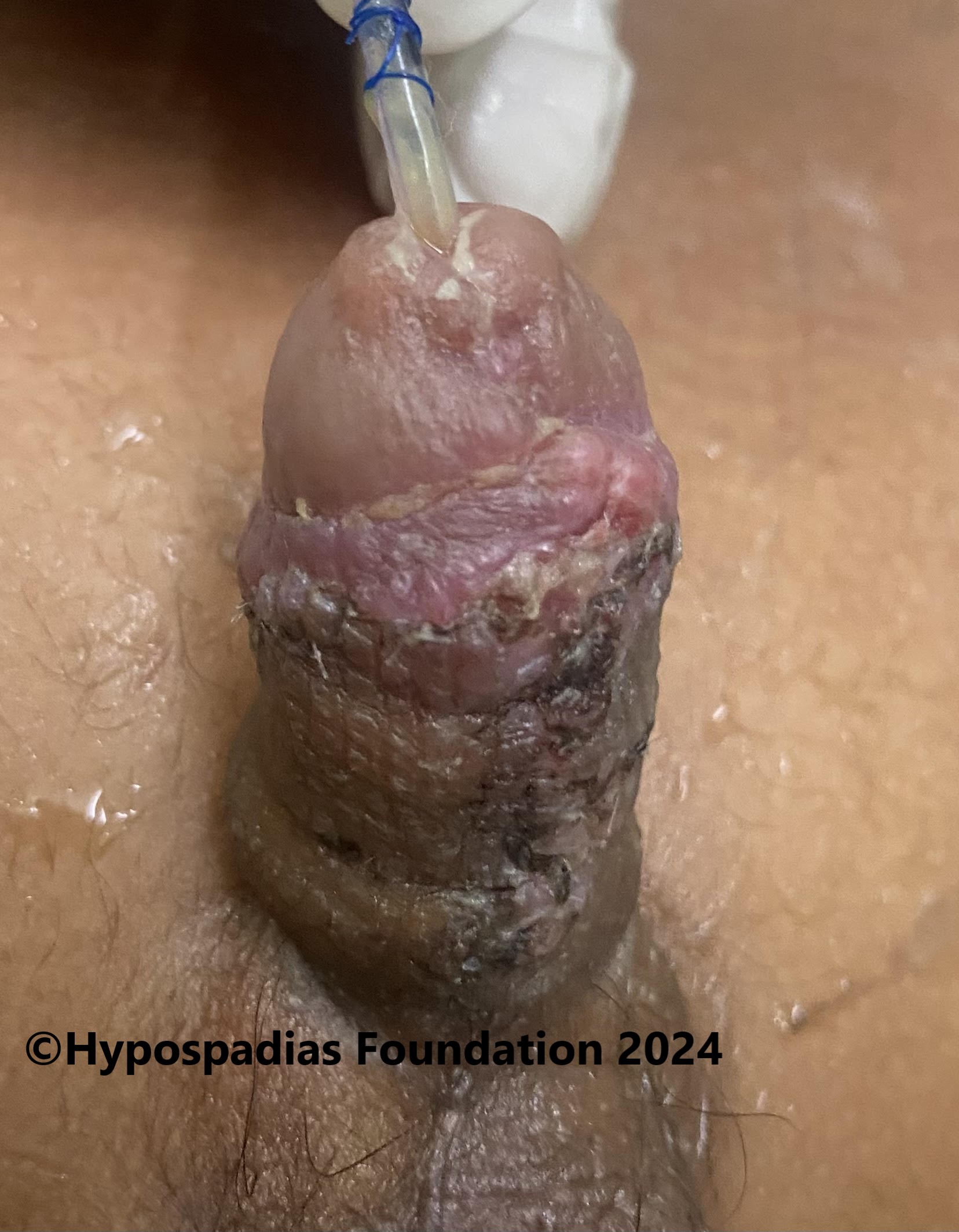
- Pic 2: Hypospadias surgery site inspection at week 1 after surgery
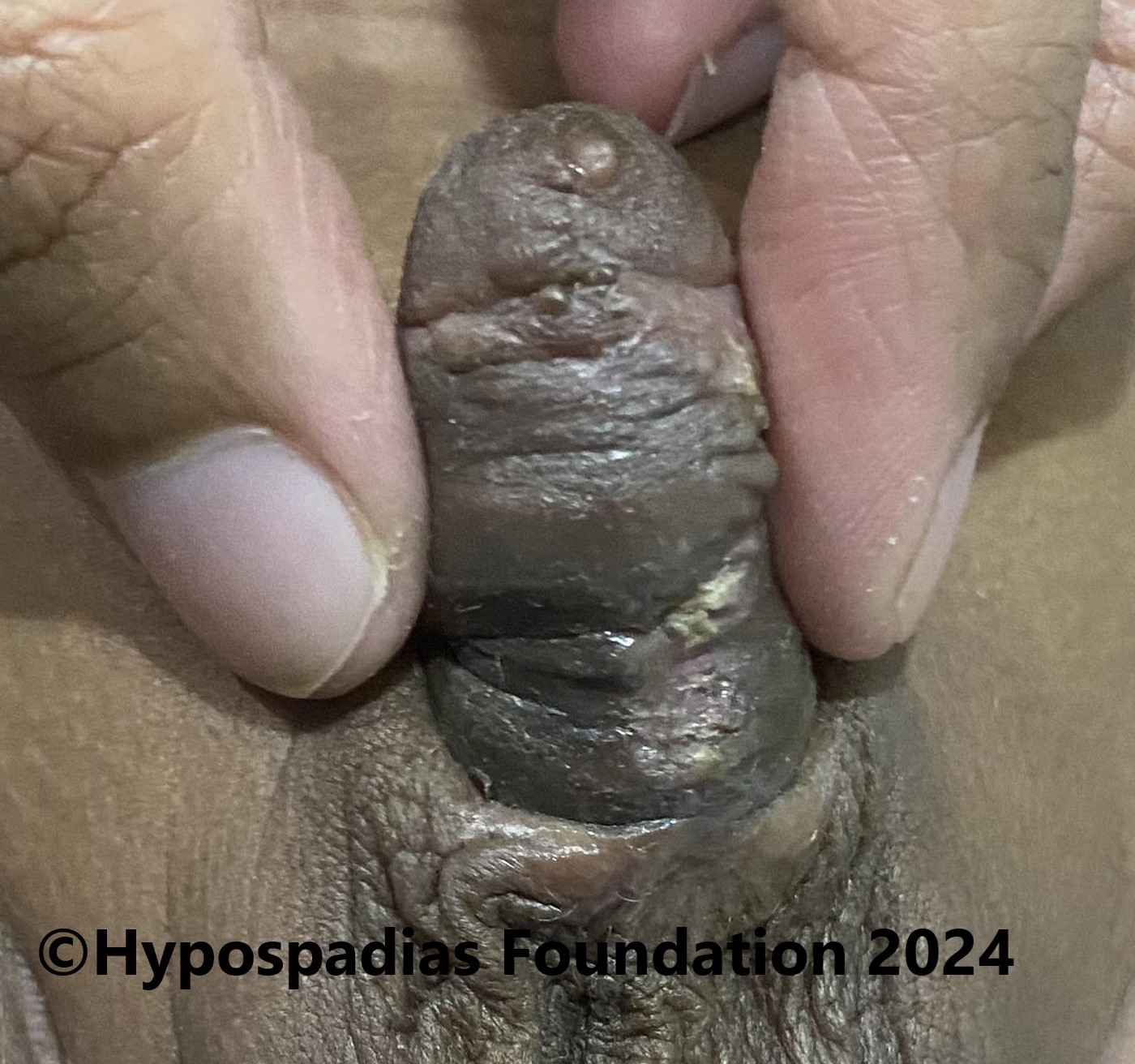
- Pic 3: Hypospadias surgery site inspection at week 3 after surgeryRecovery to a new urethra in the larger sense of passing urine through the new passage happens when the child starts passing urine comfortably which can be expected 2-3 days after removal of the hypospadias catheter. For the first two or three days there may be little bit of pain in passing urine through the newly formed urethra.
The final recovery happens when the swelling of the penis subsides, the sutures get absorbed and the penis assumes its final shape and thus one can see the cosmetic outcome. This time which the swelling takes to go away may be variable but usually takes up to a month after hypospadias surgery. Especially in kids after hypospadias surgery or urethroplasty, sometimes the penis looks black, blue, swollen and bruised and yet after a month or so everything looks so normal as if just a circumcision has been done.
Penis is an organ which tends to swell up at the slightest excuse be it a minor infection, injury and as hypospadias surgery involved major cutting and stitching, penis does swell up significantly after hypospadias surgery. Equally importantly the penis is also an organ which heals very fast. Hence, almost normal skin cover comes back even after an extensive hypospadias repair in which a lot of penile skin gets rearranged. Sometimes the penile skin looks very raw and incomplete for some days after surgery but when the patients finally come back after a month it looks like no surgery was done as the skin of penis has an amazing regenerative capacity. Partly this is because of an extensive blood supply of penis skin and partly because of the loose specialized skin.
We have started using specialized Tegaderm and light gauze dressings.
Tegaderm is a transparent cling wrap kind of dressing which is very easy to take off and gauze piece is made of soft cotton which is rolled around penis for 3-4 turns and then held with a micropore tape. One more throw of the tape also helps in holding the catheter in place after surgery. These tapes are easy to take off in outpatient clinic mostly by junior staff. The catheter is held by a small fine stitch to the glans, and this can be easily cut in outpatient clinic to remove the catheter.
The hypospadias dressing which we do at our centre does not impair the blood supply as the pressure exerted by such dressing on an already swollen penis is quite less. Also, a loose dressing decreases the chances of pain especially when erection happens at night. Our dressings also allow tissues to breathe and have good circulation after urethroplasty.
At hypospadias foundation, every year we treat more than 250 children and adults with hypospadias. Children and adults from more than 25 countries visit our hypospadias foundation center in search of cure for hypospadias. Very few centers all over the world have achieved excellence in hypospadias and we are one among them. We are dedicated in treating hypospadias and want to help kids and children suffering from hypospadias.
Dr. A.K. Singal is a renowned and top Pediatric Urologist practicing in Navi Mumbai. Dr. Singal’s passion and expertise in Hypospadias led him to establish the hypospadias foundation in 2006. The Hypospadias Foundation is the World’s First and India’s only hospital dedicated to caring for children and adults with hypospadias. It is considered as the best hospital for hypospadias surgery in India.
Dr Shenoy along with Dr Singal aim to provide world class surgery and treatment for children and adults with hypospadias and DSD. They have helped more than thousands of children and adults with hypospadias from all over the world.
If you or your child has hypospadias and you wish contact Hypospadias foundation, the you can contact us by following methods:
Contacting the Hypospadias Foundation:
- Website: https://www.hypospadiasfoundation.com/
- Email: hypospadiasfoundationindia@gmail.com
- Phone:
- +916262840940
- +916262690790
- +919324180553(whatsapp and teleconsult)
Fill up contact form: https://www.hypospadiasfoundation.com/contact/
SEO Rich Keywords:
Recovery after hypospadias surgery, anaesthesia in hypospadias surgery, recovery from anesthesia after hypospadias surgery, dressing after hypospadias surgery, dressing change after hypospadias surgery, catheter after hypospadias surgery, catheter removal after hypospadias surgery, best hypospadias surgeon India, best hypospadias surgery hospital in india, double diaper in hypospadias, penile swelling after hypospadias surgery, final recovery after hypospadias surgery,
Contact Form for Hypospadias Foundation
Please fill all clinical details and upload pictures and clinical summaries (if available)

